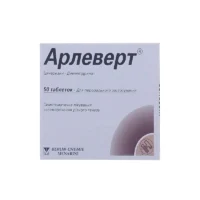Description
Triftazin-Darnytsia (Trifluoperazine) Solution for Injections 2 mg/ml
Ingredients:
- Each 1ml vial contains 2 mg of trifluoperazine.
Dosage:
The dosage of Triftazin-Darnytsia should be determined by a healthcare professional based on the individual’s condition. It is typically administered as an intramuscular injection.
Indications:
Triftazin-Darnytsia is indicated for the management of schizophrenia and other psychotic disorders. It helps alleviate symptoms such as hallucinations, delusions, and disorganized thinking.
Contraindications:
Avoid using Triftazin-Darnytsia if allergic to trifluoperazine or under certain medical conditions.
Directions:
Administer the injection as directed by a healthcare professional and follow all instructions carefully for optimal results.
Scientific Evidence:
Trifluoperazine, the active ingredient in Triftazin-Darnytsia, is a typical antipsychotic that blocks dopamine receptors in the brain. Studies support its efficacy in managing schizophrenia symptoms. Research in the Journal of Clinical Psychopharmacology showed trifluoperazine’s effectiveness in reducing positive symptoms of schizophrenia.
Additional Information:
- Trifluoperazine antagonizes dopamine receptors in the brain, reducing psychotic symptoms.
- It also has antiemetic properties, aiding in managing nausea and vomiting.
Compared to other antipsychotics, Triftazin-Darnytsia has shown similar effectiveness in controlling psychosis symptoms. Research suggests it may have a lower risk of weight gain, which is crucial for treatment adherence and outcomes in patients with schizophrenia.





